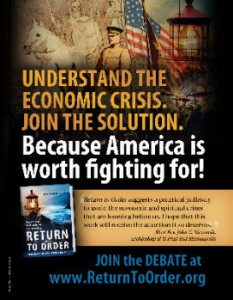 In 2008, the nation was hit by a financial crisis brought about by mortgage loans to those with low credit scores. For years, the country has struggled to recover.
In 2008, the nation was hit by a financial crisis brought about by mortgage loans to those with low credit scores. For years, the country has struggled to recover.
Is Technology Ruining Your Life? Take A Quick Quiz To Find Out By Clicking Here.
However, it now seems nothing has been learned: subprime lending is back with a vengeance.
It is true that the type of loans has changed. Lenders are staying away from mortgages. Last year, subprime mortgages accounted for a mere $4 billion compared with the 2005 high of $625 billion.
But lenders are quickly expanding their reach into other areas.
During 2014, an estimated 40 percent of auto, credit card and other loans went to subprime customers. This involved more than 50 million loans worth some $189 billion. This is the highest number of non-mortgage loans since 2007 when 41 percent of consumer lending went to subprime consumers.
With the rollout of subprime loans, new types of nonbank lenders have appeared on the scene that can target the subprime sector. Because they are outside the traditional banking establishment, the new lenders avoid the regulatory scrutiny generally applied to big banks. Many are brand new firms backed by venture capital or hedge funds seeking higher returns on investment.
The new subprime lending is disturbing. Such a trend represents what might be called the “frenetic intemperance” of the times when sound economics is sacrificed to short gain gains. It is easy to blame lenders who extended easy credit to risky prospects. However, blame must also be assigned to consumers who overextend themselves to buy that which would be better postponed until later.
Lenders and borrowers alike are consumed by the desire to throw off restraint and engage in unwise lending and spending. They are struck by the illusion that this particular credit bubble will not burst – at least not on their watch. The reality is that such patterns of consumption always represent an unbalance in economy that often ends in crashes and default. Like the 2008 subprime mortgage crisis, everyone pays in the end.
But tragically some analysts do not see any problem with such lending. They even see it in a positive light since the willingness to take on more debt is, for them, a sign of growing confidence in the economy. Likewise, banks which extend such loans express a similar confidence by being more willing to take on greater risks. Meanwhile, household debt has returned to pre-2008 levels. In the fourth quarter of 2014 alone, it increased $306 billion.
What is forgotten is that the subprime borrowers are the hardest hit when a financial crisis appears. They pay much higher interest rates (sometimes as much as 30 percent) than those with good credit ratings. They are much more likely to miss payments at the first sign of a downturn. The upstart subprime lenders also are the hardest hit in times of crisis. They frequently file for bankruptcy and leave the economic arena when the going gets rough. All this has repercussions down the finance chain from lenders to security bundlers to investors as was seen in 2008.
Such a bloated debt burden also gives a false picture of the American economy.
Many economic indicators may be up, but debt obligations help create illusions. A case in  point is the explosion of auto sales which many say is an indicator of a more healthy economy.However, much of the upturn is fueled by easy financing. The boom in car sales could go bust quite easily when the party stops. The “party” is the real problem.
point is the explosion of auto sales which many say is an indicator of a more healthy economy.However, much of the upturn is fueled by easy financing. The boom in car sales could go bust quite easily when the party stops. The “party” is the real problem.
Easy credit to those least able to pay is the telltale sign of a party economy. It represents a culture of unrestraint that does everything to extend the party and not consider the future. Until America understands this hard reality and returns to order, the lessons of 2008 seem doomed to go unlearned.
As seen on TheBlaze.com


